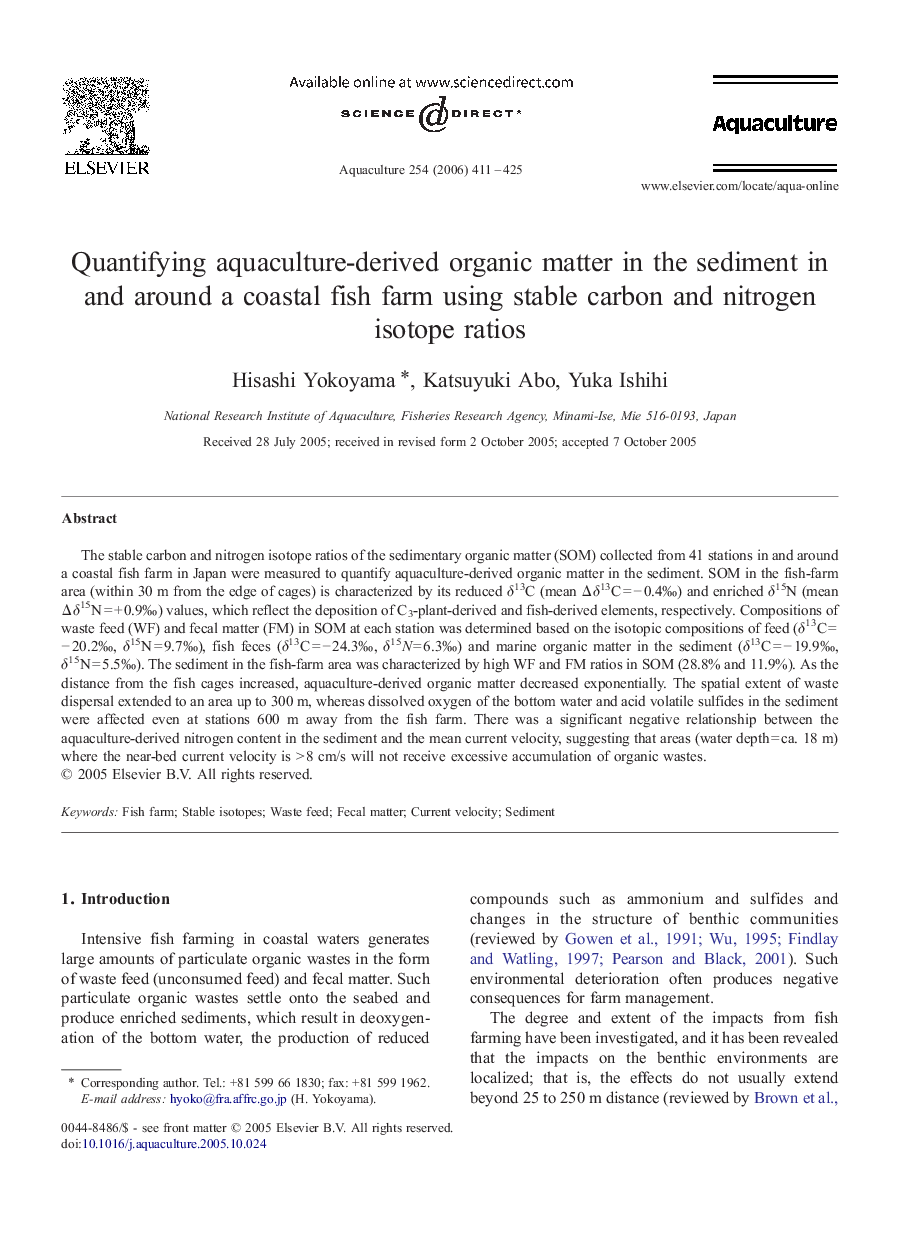| Article ID | Journal | Published Year | Pages | File Type |
|---|---|---|---|---|
| 2426013 | Aquaculture | 2006 | 15 Pages |
The stable carbon and nitrogen isotope ratios of the sedimentary organic matter (SOM) collected from 41 stations in and around a coastal fish farm in Japan were measured to quantify aquaculture-derived organic matter in the sediment. SOM in the fish-farm area (within 30 m from the edge of cages) is characterized by its reduced δ13C (mean Δδ13C = − 0.4‰) and enriched δ15N (mean Δδ15N = + 0.9‰) values, which reflect the deposition of C3-plant-derived and fish-derived elements, respectively. Compositions of waste feed (WF) and fecal matter (FM) in SOM at each station was determined based on the isotopic compositions of feed (δ13C = − 20.2‰, δ15N = 9.7‰), fish feces (δ13C = − 24.3‰, δ15N = 6.3‰) and marine organic matter in the sediment (δ13C = − 19.9‰, δ15N = 5.5‰). The sediment in the fish-farm area was characterized by high WF and FM ratios in SOM (28.8% and 11.9%). As the distance from the fish cages increased, aquaculture-derived organic matter decreased exponentially. The spatial extent of waste dispersal extended to an area up to 300 m, whereas dissolved oxygen of the bottom water and acid volatile sulfides in the sediment were affected even at stations 600 m away from the fish farm. There was a significant negative relationship between the aquaculture-derived nitrogen content in the sediment and the mean current velocity, suggesting that areas (water depth = ca. 18 m) where the near-bed current velocity is > 8 cm/s will not receive excessive accumulation of organic wastes.
